The Law of Accommodation: The Secret Key to Continuous Gains in Isometrics and all Resistance Training - Part III
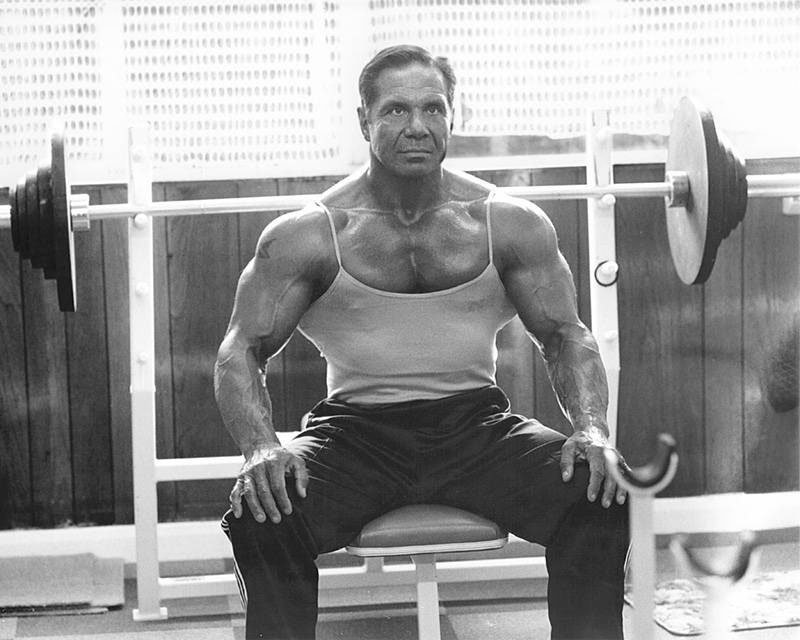 There is no "perfect" workout that will take care of you for the rest of your life.
There is no "perfect" workout that will take care of you for the rest of your life.
-Bill Pearl
This is the final part of a three-part article. Check out Part I and Part II.
Back in the late 1920s, then-president Calvin Coolidge and the first lady, Grace Coolidge, toured a chicken farm. At some point during the (no doubt dry and dull) presidential visit, the couple were led past a small coop in which a rooster was doing what roosters do, and pounding the living hell out of a hen.
Taken aback by the rooster’s relentless energy and enthusiasm for his conjugal task, the first lady remarked to the farm owner;
goodness me! Does he conduct himself like that often?
Yes, Mrs Coolidge, replied the old farmer,
perhaps twenty or thirty times a day.
Fascinating! Shot back the First Lady;
will somebody please tell that to the president?
The entire group couldn’t help but share a laugh at the First Lady’s risqué roast of the prez. But not to be outdone, Coolidge riposted with a question of his own;
And when he does this, is it always the same hen?
Oh no, Mr President, replied the farmer;
it’s a different hen every time.
Well, quipped Coolidge,
will somebody please tell that to the first lady?
In reference to this old gag, the phenomenon wherein males lose sexual interest in the same female over time is called the
Coolidge effect in psychology. The Coolidge effect is an example of sexual
habituation—where an identical stimulus elicits a
reduced, and eventually
extinguished, response over time.
Habituation also occurs in all athletic training, where it’s called
accommodation. If you keep performing the same
stimulus (workout, exercise, set/rep scheme etc.) over time, the
response disappears, leaving you with zero gains no matter how much effort you put in. We discussed the evolutionary reasons for this, and the ways athletes of the past dealt with this thorny problem in part I and part II of this article.
So—in honor of old Calvin—if you’ve stuck with me this long, here’s the money shot. How do we prevent accommodation happening, and make continuous gains?
6 Rules to Prevent Accommodation
Isometrics is the superior form of training; the older I get, and the more people I train and correspond with, the more convinced I become of this fact. But the 6 training principles outlined here to avoid accommodation apply
universally. They apply to barbell training, powerlifting, regular bodybuilding, etc. Put them into practice and you can train your entire career without becoming victim to the perils of accommodation.
Let’s go!
RULE 1: Don’t radically decrease or increase your training efforts to avoid accommodation.
This is a lesson we learned from the old-time strongmen in the
second article. If you are
overtrained, a layoff or major reduction in workload will help you. If you are experiencing a reduction in gains due to
accommodation, these things won’t help. You need to change your exercises, or your set/rep scheme.
On the flip side of the coin, we also saw how Golden Era bodybuilders thought plateaus were caused by
adaptation to the stimulus (your program), rather than
accommodation, which was not understood. So, to move forward, they tried to
intensify the stimulus; they added sets, exercises, overall volume, plus intensity techniques.
This is a natural instinct—if things ain’t working,
try harder. I admire that instinct, but it won’t work long-term for accommodation. Once you accommodate again to the new, harder workouts, where do you go from there?
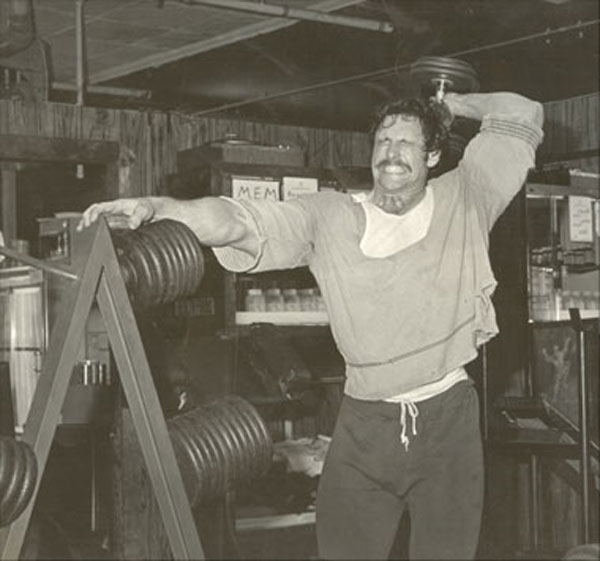 70s Mr America Steve Michalik was an example of an athlete who sought to avoid accommodation by continually upping the ante—both in training and steroid consumption. Above the front desk of his New York gym was a two-foot long syringe, mounted on a plaque that read "Message of the day: up the dosage!" It worked well, until Steve started pissing blood, and doctors found baseball-sized tumors in his liver. Michalik was forced to stop using in his late thirties, due to kidney and heart failure.
70s Mr America Steve Michalik was an example of an athlete who sought to avoid accommodation by continually upping the ante—both in training and steroid consumption. Above the front desk of his New York gym was a two-foot long syringe, mounted on a plaque that read "Message of the day: up the dosage!" It worked well, until Steve started pissing blood, and doctors found baseball-sized tumors in his liver. Michalik was forced to stop using in his late thirties, due to kidney and heart failure.
In reality, accommodation is caused by the
repetition of a consistent stimulus, not by a
lack of intensity. If your same old program isn’t working, you don’t need to jack up the intensity, you just need to change things.
This is not to say that periods where you go balls (or ovaries, or…whatever) to the wall are bad, once in a while. It’s good to push yourself (even if you overtrain) sometimes. Increasing sets and reps
will overcome accommodation—you just can’t keep doing it forever. You don’t need to.
What tactics can you use as well? See rules 2 and 3.
RULE 2: For general strength and fitness, change training variables.
Most folks who go to the gym or perform isometrics with an
IsoMax are
generalists.
They aren’t obsessed with hitting a certain number on a particular exercise; they aren’t fixated on achieving maximal strength, or exclusively muscular growth. Most folks want a nice blend; some extra strength, added muscle, improved health, mobility, and fitness. I think this is an ideal attitude for the vast majority. For one thing, the Law of Diminishing Returns means that even a
little work in any area gives you a bigger bang for your buck, in terms of efficiency, compared to the endless workload required by an elite athlete.
Besides—why have only a single cake? Why not have a taste of the whole bakery?
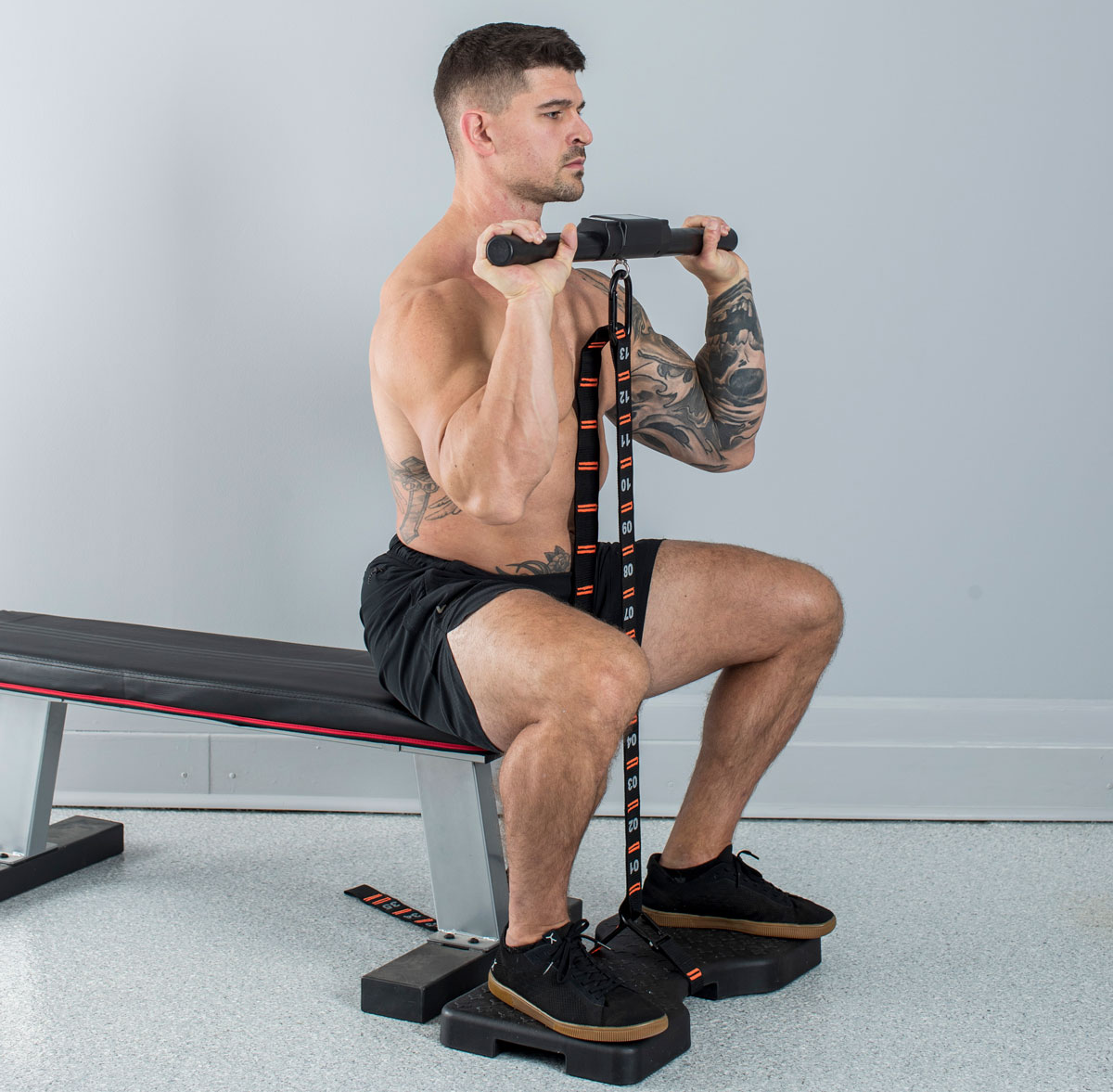 Altering training variables using an Isomax is easy and scientific. If you use it correctly, gains in strength, muscle and fitness will keep coming for many years.
Altering training variables using an Isomax is easy and scientific. If you use it correctly, gains in strength, muscle and fitness will keep coming for many years.
If you’re a generalist like this, you also have a lot more variables to alter to prevent accommodation. When it’s time to alter your program, you can change:
- The exercise (biceps curl to seated curl)
- The range of motion/training angle
- Reps/hold times (singles to twenties/max reps to 60 second holds, and everything in-between)
- Sets (add sets for lower reps with higher weights/remove sets for higher rep efforts)
- Density (rest between sets)
- Training frequency (more recovery or less)
Unless you’re a specialist in a certain area, you don’t need to worry too much about losing adaptation from a certain rep range or volume, when you switch things around. There’ll be enough overlap that you won’t regress.
General strength and muscle mass levels—unlike highly
specialist qualities—are typically pretty forgiving. You can gain some strength with higher reps, just as you can gain some muscle with lower reps, if you’re training hard.
If you are a specialist, see rule 3.
How often do you need to vary things? See rule 4.
RULE 3: For specific goals, change drills, not sets and reps.
For building strength in any drill, maximum load is king (cf. the
Hebb’s Rule). This means single reps, or maximum holds. This kind of training produces the quickest adaptation, but it also triggers accommodation fastest. This is why old school powerlifters only used singles sparingly, typically leading up to contest day. This avoided accommodation, or "peaking too early" to use the training terminology of the time.
After a phase of singles training, on say, bench press, it was typical to begin a training cycle anew by dropping the weight and ramping up the reps—to sets of 10, 12, or even more. Despite the fact that they still used the same exercise, the different rep range changed the training stimulus, and this bypassed accommodation. Eventually, however, the athlete would accommodate to the new rep range—so they changed reps again, say to 8 or 5 for a month or two. Then, to maybe triples, for few weeks. Then singles, and the cycle comes to an end again, hopefully with a higher max than last time.
This approach—which was the backbone of ALL strength training for a very long time—is called
linear periodization. You avoid accommodation by systematically dropping your reps and raising your weight.
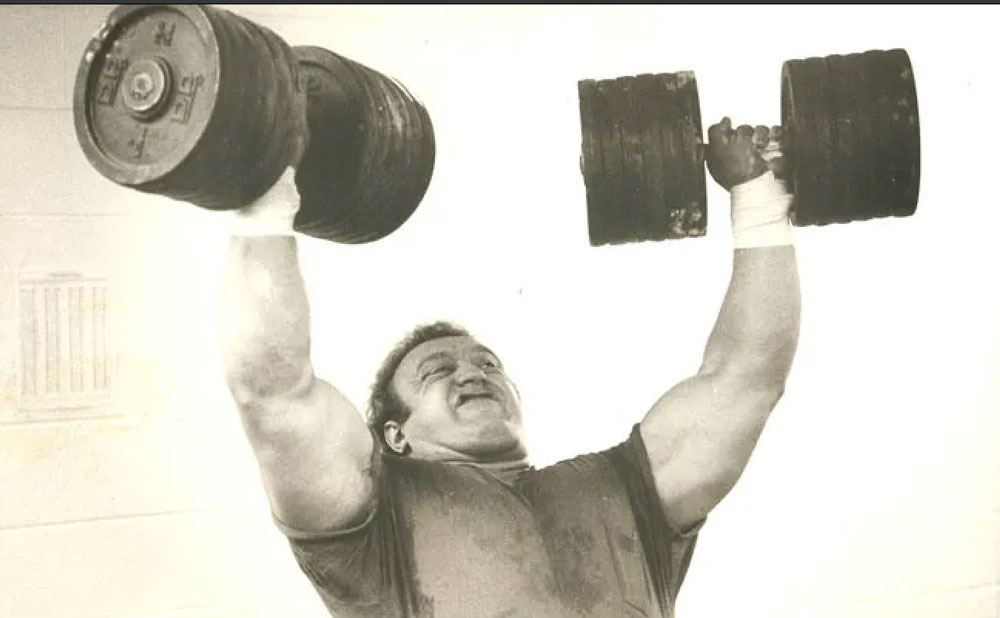 Linear periodization works. It has produced some frighteningly strong men—Kazmaier springs to mind. Check out his linear periodization bench press program here.
Linear periodization works. It has produced some frighteningly strong men—Kazmaier springs to mind. Check out his linear periodization bench press program here.
But linear periodization has a major problem. Although you’re always developing conditioning in some areas, you’re always becoming
deconditioned in others at the same time. For example, once you stop singles and begin doing tens, you will build up your hypertrophy and general conditioning fairly rapidly over the course of 4-10 weeks. However, your absolute strength will begin to drop. Your body and mind will slowly get rusty in handling the maximum weights on the bench press. By the time you get round to the singles again in a few months, you’ve lost a chunk of the absolute strength you had before. You gain it back (and more) during the singles phase, but by then the hypertrophy and conditioning for the higher reps is declining. This kind of decline is not hugely meaningful if you’re a
generalist—but if your life revolves around your bench press, it’s not the most efficient way to move forward. You’re always playing catch up, hoping to make some kind of net gain as you go.
A more
efficient way to avoid accommodation would be to just change your exercises. These changes cannot be radical—you can’t do calf raises and expect your bench to go up—in fact they can be surprisingly trivial to bypass accommodation. Relatively minor alterations do the job. You can change your grip, from regular, to close, to wide; you can change your range, from full range, to partial, to floor presses; you can change the point where the bar touches your torso; you can use chains or bands to alter the strength curve. There are literally dozens of ways to perform the same exercise.
Continue each variation for a few sessions (building up to daily max or near-max singles), then switch out to another. This allows you to perform high-load singles training
year-round, without accommodation.
And what about the hypertrophy/conditioning work, if you’re always doing singles? You just do the higher rep sets in the same workout as your
accessory work, after the singles (again, changing exercises regularly). This, in essence, is what Louie Simmons called
conjugate periodization. It’s the heart of the infamous Westside system of powerlifting. It allows you to develop all desirable athletic qualities at the same time, with no time lost due to deconditioning.
This approach also applies to isometrics. If there’s a particular drill you are looking to specialize in, keep performing high-load, brief holds regularly, but
alter the drill every so often to avoid accommodation. For example, isometric deadlifts can be performed at different heights; with difference width grips; underhand, underhand and overhand, etc. I’ve seen athletes attach bands and live weights to their
IsoMax to give the exercise a different feel. As ever—get creative.
This rule applies for hypertrophy as well as strength. Hypertrophy is more "forgiving" than maximal strength, as it can be attained over a larger variety of rep ranges and hold times, but if you ever discover a training zone that gives you particularly good results, you can stick with it if you want. You can avoid accommodation by changing exercises instead of volume.
RULE 4: Change variables every 6-8 weeks.
How often do we change things up? Varying your training to avoid accommodation is like walking a fine line.
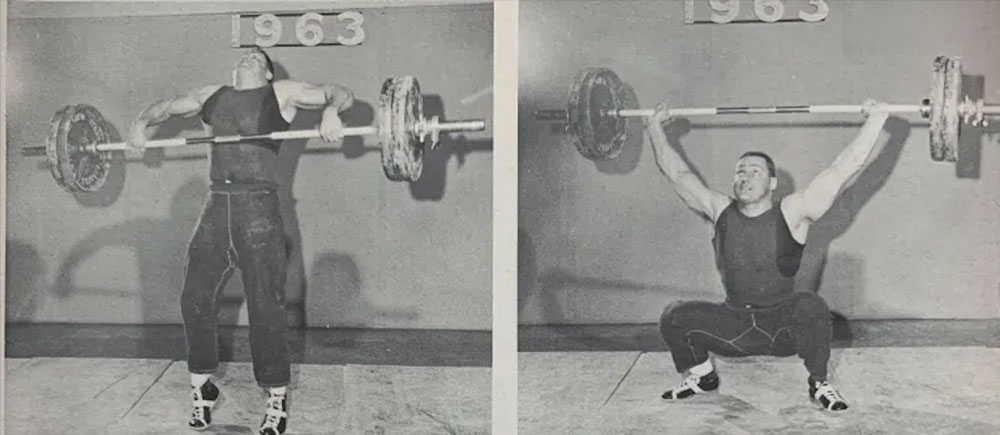 Champion Bill March was one of the greatest advocates—and exemplars—of combining heavy isometrics with weightlifting.
Champion Bill March was one of the greatest advocates—and exemplars—of combining heavy isometrics with weightlifting.
Continually flip-flopping programs or drills can rob you of gains—particularly if you are varying sets and reps. It can take even advanced athletes a few sessions to really get to grips with a new exercise, and psychologically become used to it. You learn a tweak here, an alteration to speed or form there, maybe remember something useful from when you did it last time. Then there’s a stretch of sessions where you put all that learning to use, and really make some gains. But if you continually change exercises—every two or three sessions, maybe more—you may be robbing yourself of this process, and short-cutting your results.
At the other end of the spectrum, if you stick with an exercise too long, accommodation kicks in and gains grind to a halt. Your initial enthusiasm for an exercise becomes a sense of boredom, then unease, and eventually dread. Your joints will begin to ache. You may start to regress, or become injured.
Where’s the sweet spot? If you look at the isometrics literature, all the iconic strength scientists—Medvedev, Zatsiorski, Verkhoshansky—all seem to agree on 6-8 weeks.
Can this vary? Sure. Advanced athletes accommodate much faster to training faster than new fish. Novices may be able to progress for months on their first program, whereas elite powerlifters may begin to accommodate to a new program in as little as three weeks. Most of us are somewhere in the middle (i.e., 6-8 weeks). Consider also, the higher the loads you’re using, the quicker you will accommodate; we accommodate to singles faster than sets of five and ten, for physiological reasons. Additionally, there are individual differences at play; some athletes just plateau faster. 6-8 weeks is a rough rule of thumb.
Use your training log plus your instincts as feedback to guide you around these untidy grey edges. Been working at an exercise for a few weeks (with good form and enough food and recovery) and not improving much, or at all? If it’s been more than three weeks, consider making a change. Still making quantifiable gains on an exercise and enjoying it, even after six weeks? Keep on rolling, brother.
RULE 5: Change your warm-ups and cool-downs also.
It’s amazing to me how many athletes find a warm-up and stick with it for life. This is a mistake.
Over time you’ll find those "magic" warm-ups you previously relied on don’t loosen you up as well as they once did; in fact, far from lubing up your shoulders, hips, and knees, after all these months (or years) the same old drills actually seem to irritate them. What gives?
Accommodation gives. When you change your program, change your warm-ups. Vary the drills, the order, the speed—go from static to dynamic. Try everything. Just like your main workout, revitalizing your warm-up will refresh your results. New stimulus, new response.
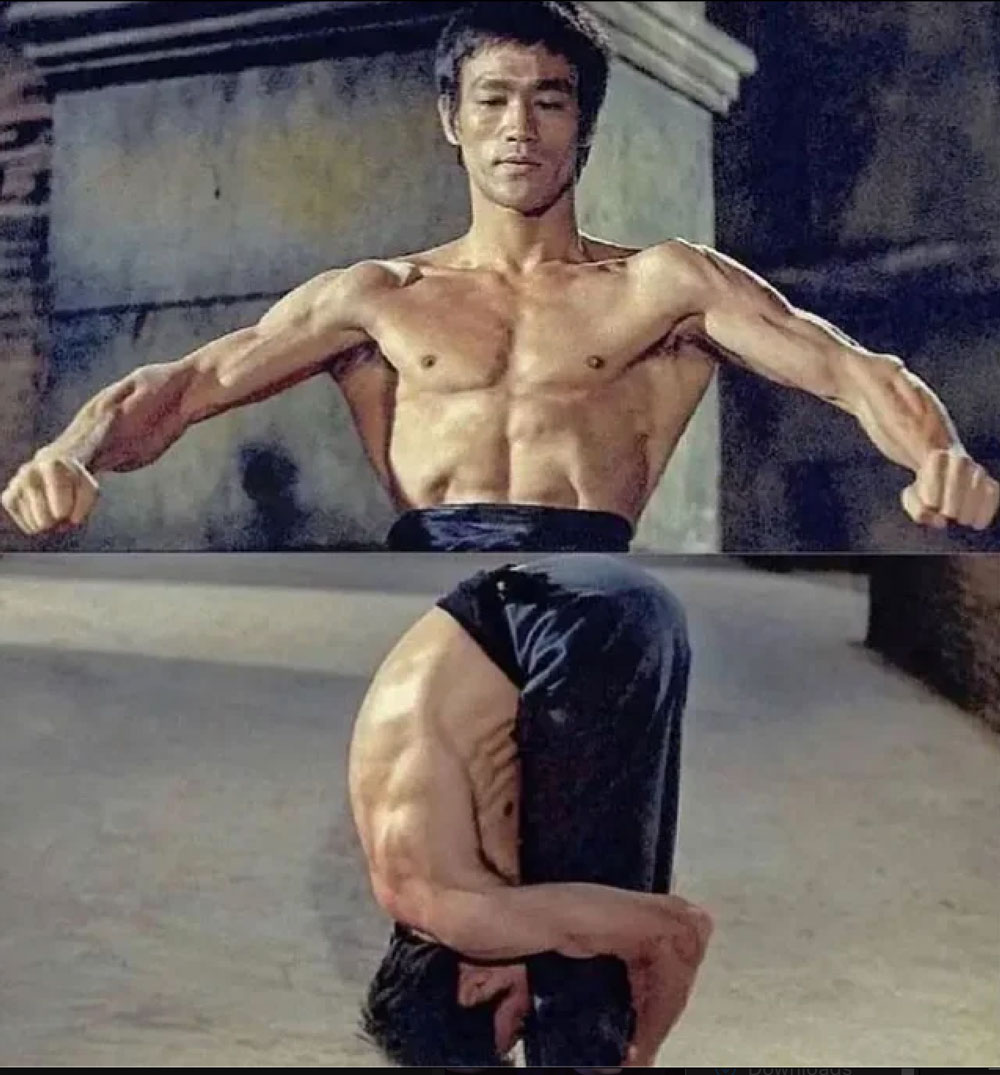
The Ultimate Isometrics Manual contains an entire system of warming up and cooling down, with many exercises that can be swapped in and out over a lifetime. Check it out.
RULE 6: Accommodation applies to everything.
Just a final note here that you might have already figured out—
habituation, the phenomenon behind accommodation—applies to every living species. It’s universal. It applies to single-celled organisms, just as it does for primates. It’s universal.
We’ve been discussing resistance training, but habituation also applies to all forms of stimulus and response/adaptation. That includes flexibility, cardiovascular fitness, skill acquisition, and even cognitive learning.
If you keep applying the same stimulus over and over, the response becomes dull and eventually stops.
It’s surprising how many athletes fail to figure this out.
A few months back I was talking to a big, jacked martial artist from Dallas. Traditional karate nut. Guy looked great and was in his thirties. He was complaining that he was "getting’ old" (thirties?!) and losing his flexibility for kicking. We talked through his entire training program. An avid bodybuilder, he knew well enough to frequently change his exercises in the gym to keep dem gains coming. Nice. But in the dojo, he told me he would go through the same basic stretches the same way, month-in, month-out. Well, I told him, no sh** your mobility is reducing. You’re not getting
old, you’re getting
stale. You’ve accommodated.
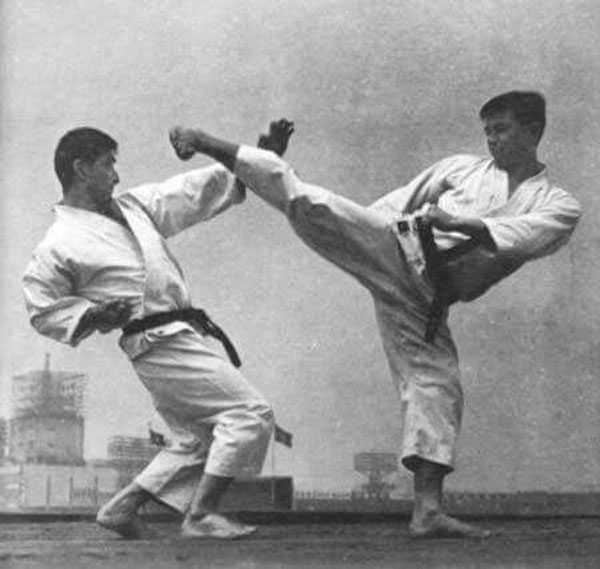
This applies to you, too, beautiful. Change things around. You don’t need to religiously alter every single variable of whatever you’re doing every six to eight weeks—just be aware. If things are feeling stale somewhere, vary them. The same old karate stretches not working for you? Explore yoga. Or pilates. Or gymnastics methods. Hell, buy a second-hand book to learn about those barre stretches used by ballet dancers, and give them a try. It didn’t hurt Van Damme, did it? You can return to your usual stuff in a month or two, and you might have learned something on the way. Same applies to your cardio, and everything else. There’s a reason why doing new stuff keeps people young.
We’ve all been duped into the idea of the "perfect" training program (me included). Everyone has searched for it, at some stage. I think this myth started with the old muscle magazines—follow the champ’s workout, and you can look just like him! We saw this headline, or others like it, every few weeks for decades. It sank in.
In reality—as the late, great, Bill Pearl taught—there is no "perfect" program. Accommodation makes it impossible. However good your training is, it has to change—it must. How do you change? The answers are in these six golden rules that will help you make continuous gains for years—all the way right up to your genetic ceiling.
…When you get there, remember old Coach.
Any questions? Hit me up below. I’ll help if I can.
Back